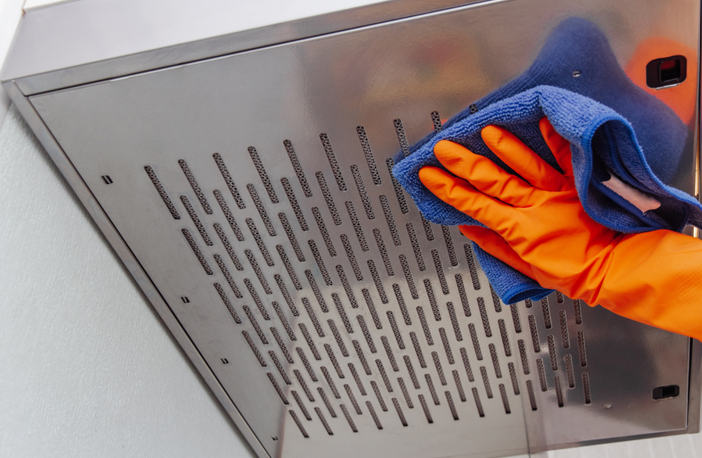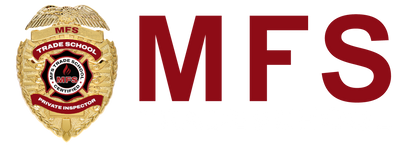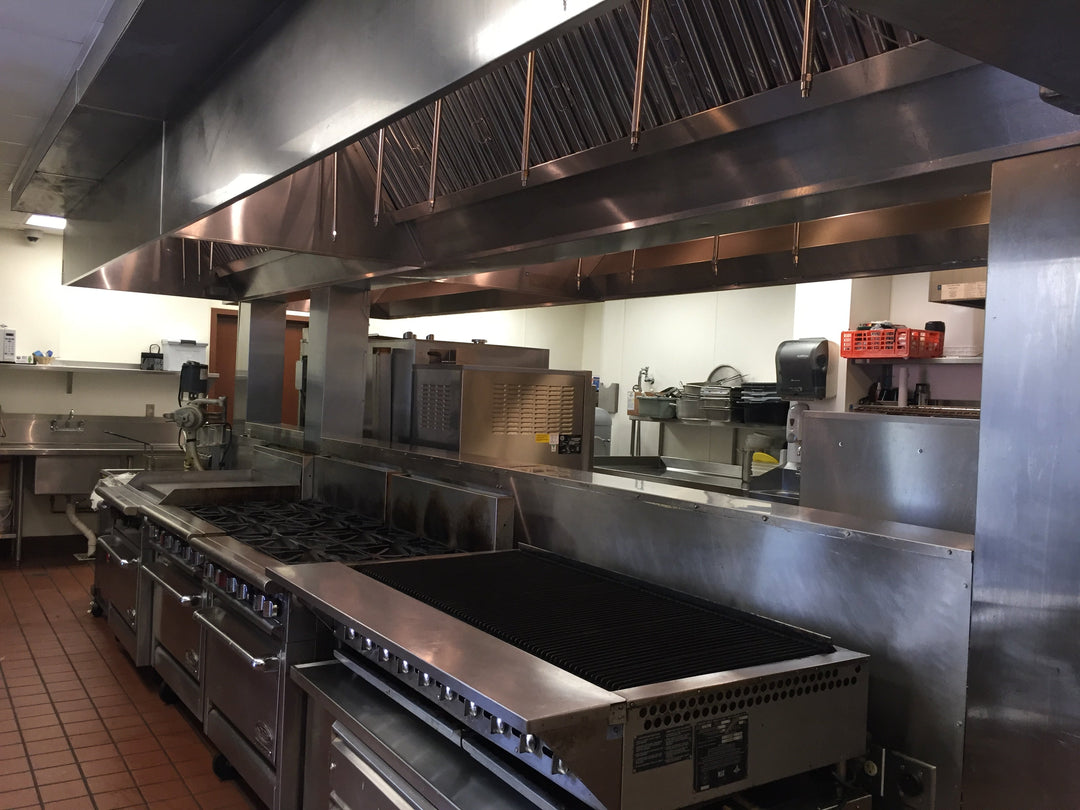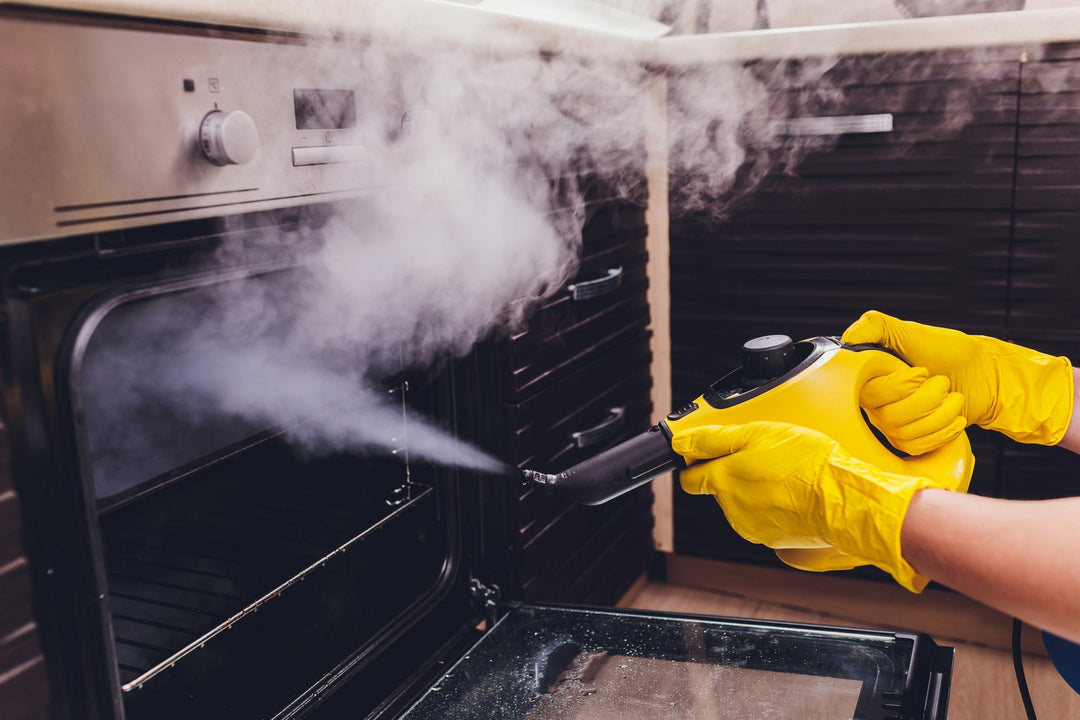Sustainable Kitchen Practices: The Role of Hood Cleaning

The restaurant industry is at a crucial point where being efficient in operations goes hand in hand with taking care of the environment. Sustainable kitchen practices have become a must-have for modern food service businesses, changing the way they handle their impact on the planet while still running smoothly.
One important yet often ignored part of these eco-friendly efforts is hood cleaning. This basic maintenance task is not just about keeping things tidy—it shows a dedication to being environmentally responsible and excelling in operations. Professional hood cleaning services, such as those offered in the Silver Package Exhaust Hood Cleaning, are crucial in:
-
Lowering energy use by improving ventilation systems
-
Reducing harmful pollutants released into the air
-
Stopping the buildup of dangerous grease deposits
-
Supporting smooth kitchen operations
The connection between hood cleaning and caring for the environment creates a framework for managing kitchens sustainably. Clean ventilation systems work efficiently, using less energy and lowering the carbon footprint of commercial kitchens. This organized approach to maintenance aligns with broader sustainability goals while ensuring compliance with health and safety regulations.
Restaurant owners who prioritize sustainable hood cleaning practices position themselves as industry leaders in environmental stewardship. These practices demonstrate a commitment to both operational excellence and ecological responsibility—a dual focus that resonates with environmentally conscious consumers and regulatory bodies alike.
To further enhance the effectiveness of hood cleaning, integrating advanced tools like the MFS Electrostatic Misting Fogger can be beneficial. This battery-operated device not only simplifies the cleaning process but also ensures thorough sanitation, thereby supporting the overall goal of sustainable kitchen practices.
Moreover, adopting comprehensive strategies for hood cleaning can significantly transform a business's operational dynamics. Insights from successful transformations in the hood cleaning sector could provide valuable guidance for restaurant owners aiming to optimize their operations.
It's also important to note that maintaining clean kitchen exhaust systems is not just about following regulations; it's about creating a healthier environment for staff and customers alike. Utilizing high-quality equipment, such as a 100 Pressure Washing Hose, can greatly enhance the efficiency of these cleaning processes.
The Importance of Sustainable Kitchen Operations
Sustainable kitchen operations represent a critical shift in modern commercial food service management. The integration of eco-conscious practices directly impacts operational efficiency, cost management, and environmental preservation.
Resource Conservation
-
Water usage optimization through efficient dishwashing systems
-
Energy-efficient appliances and lighting solutions
-
Smart waste management and recycling programs
-
Strategic ingredient sourcing to reduce food miles
Cost Reduction Benefits
-
Lower utility bills through reduced energy consumption
-
Decreased waste disposal expenses
-
Minimized equipment replacement costs
-
Reduced cleaning supply expenses
Environmental Impact Reduction
-
Reduced landfill waste
-
Minimized water pollution
-
Lower greenhouse gas emissions
Operational Advantages
-
Enhanced equipment longevity
-
Improved air quality
-
Streamlined workflow efficiency
-
Reduced maintenance requirements
The implementation of sustainable practices in commercial kitchens creates measurable improvements in operational performance. Restaurants adopting green initiatives report 20-30% reductions in energy costs and 30-40% decreases in water consumption. These sustainable operations also strengthen brand reputation, attracting environmentally conscious customers and employees.
Health and Safety Benefits

-
Improved indoor air quality
-
Enhanced workplace safety conditions
-
Reduced exposure to harmful chemicals
-
Better food safety practices
Sustainable kitchen operations extend beyond environmental considerations to impact business success. Restaurants implementing comprehensive sustainability programs experience increased customer loyalty, reduced operational costs, and improved staff retention rates. The adoption of eco-friendly practices positions businesses as industry leaders while contributing to global environmental preservation efforts.
The integration of sustainable practices requires systematic implementation across all kitchen operations. This includes equipment maintenance, cleaning procedures such as using a freezer cleaner, waste management, and staff training. Each component plays a vital role in creating an environmentally responsible commercial kitchen operation.
To further enhance these sustainable practices, it's essential to follow guidelines such as those outlined in the Florida Department of Environmental Protection's FGLP Handbook, which provides comprehensive strategies for reducing waste and promoting sustainability in various sectors, including food service. Additionally, the use of resources like the NREL's document on energy efficiency can provide valuable insights into optimizing energy consumption in commercial kitchens.
Understanding Hood Cleaning in Commercial Kitchens
Commercial kitchen exhaust systems serve as the respiratory system of professional kitchens, managing airflow, removing smoke, and capturing grease particles. These systems require specialized cleaning to maintain optimal performance and prevent hazardous conditions.
Critical Components of Hood Cleaning:
-
Removal of accumulated grease from hood surfaces using a powerful hood degreaser
-
Deep cleaning of exhaust fans and ductwork
-
Inspection of system components
-
Documentation of cleaning procedures
Hood cleaning plays a vital role in preventing kitchen fires. Grease build-up creates a highly flammable environment within the exhaust system. A single spark can ignite this accumulated grease, leading to rapid fire spread throughout the ductwork.
Sustainable Kitchen Hood Cleaning Practices:
-
Use of biodegradable cleaning solutions
-
Implementation of water-saving techniques
-
Proper disposal of extracted grease
-
Regular maintenance schedules to reduce emissions
Professional hood cleaning services employ specialized tools and techniques to remove grease deposits effectively. This process not only ensures safety but also contributes to the kitchen's environmental footprint reduction. Clean exhaust systems operate more efficiently, consuming less energy and reducing the carbon emissions associated with commercial kitchen operations.
Regular hood cleaning schedules align with green kitchen certification requirements and demonstrate commitment to sustainable kitchen management practices. These services protect both the environment and kitchen staff while extending the lifespan of ventilation equipment.
Moreover, it's crucial to note that with the rise of foodborne illnesses and viral outbreaks, commercial kitchens must adopt advanced virus disinfection methods as part of their cleaning protocols. Implementing effective cleaning protocols not only protects customers but also ensures overall public health and safety.
For those looking into starting a hood cleaning business, it's essential to understand the costs, training, and certification requirements involved. Such a venture can be rewarding for entrepreneurs seeking stable and lucrative opportunities in this consistently demanded field.
Furthermore, aspiring entrepreneurs can benefit significantly from mentorship in navigating challenges and seizing opportunities within the cleaning industry.
The Process of Eco-Friendly Hood Cleaning
Eco-friendly hood cleaning combines traditional maintenance methods with sustainable practices to ensure both safety and environmental responsibility. Here's a detailed breakdown of the process:
1. Initial Inspection and Assessment
-
Visual examination of hood components
-
Documentation of grease buildup patterns
-
Energy efficiency evaluation of the system
-
Identification of potential sustainability improvements
2. Pre-cleaning Preparation
-
Installation of recyclable catch basins
-
Protection of the surrounding areas with biodegradable materials
-
Setup of energy-efficient cleaning equipment
-
Preparation of eco-certified cleaning solutions
3. Sustainable Degreasing Process
-
Application of plant-based degreasers
-
Natural enzyme treatments for stubborn deposits
-
Steam cleaning with minimal water consumption
-
Chemical-free scraping techniques
4. Power Washing with Water Conservation
-
High-pressure, low flow washing systems
-
Water recycling during the cleaning process
-
Targeted spray patterns to minimize waste
-
Collection of wastewaters for proper disposal
5. Component-Specific Cleaning
Filters, ductwork, fan units, and hood surfaces are cleaned using specific eco-friendly methods:
-
Filters: Cleaned using biodegradable solutions
-
Ductwork: Treated with eco-safe polishing agents
-
Fan units: Maintained with green lubricants
-
Hood surfaces: Restored using non-toxic materials
6. System Testing and Verification
After cleaning, various tests are conducted to ensure optimal performance:
-
Air flow measurements
-
Fan performance checks
-
Energy consumption analysis
-
Ventilation efficiency testing
Cleaning Schedule Implementation
To maintain cleanliness and sustainability, a structured cleaning schedule is implemented:
Daily Tasks:
-
Surface wiping with eco-friendly cloths
-
Filter inspection
-
Grease collection maintenance
Weekly Tasks:
-
Deep clean of accessible components (utilizing professional services like those offered in the Gold Package Kitchen Exhaust Hood Cleaning)
-
Sustainability audit checks
-
Energy performance monitoring
Monthly Tasks:
-
Professional eco-friendly cleaning (recommended)
-
System efficiency assessment
-
Environmental impact review
Green Chemical Management
In our commitment to sustainability, we use the following green chemicals for our cleaning processes:
-
pH-neutral cleaning agents
-
VOC-free solutions
-
Biodegradable degreasers
-
Natural sanitizing compounds (which can also include virus disinfecting services for added safety)
The frequency of professional cleaning depends on cooking volume and type:
-
Light-duty operations: Quarterly
-
Medium-duty kitchens: Bi-monthly
-
Heavy-duty facilities: Monthly
This systematic approach ensures thorough cleaning while maintaining environmental consciousness. Each step incorporates sustainable materials and methods, reducing the ecological footprint of kitchen maintenance operations.
Benefits of Hood Cleaning for Sustainable Kitchen Operations
Professional hood cleaning offers significant benefits for sustainable kitchen operations by improving air quality and enhancing ventilation efficiency. A clean hood system has a positive impact on both environmental sustainability and operational performance.
Air Quality Enhancement
-
Removal of airborne grease particles
-
Reduction in cooking-related pollutants
-
Decreased volatile organic compounds (VOCs)
-
Minimized kitchen odor transmission
-
Enhanced indoor air quality for staff and customers
Ventilation System Performance
-
Optimized airflow through clean ductwork
-
Reduced strain on HVAC systems
-
Lower energy consumption rates
-
Extended equipment lifespan
-
Decreased maintenance requirements
Health and Safety Improvements
-
Reduced respiratory irritants
-
Better temperature regulation
-
Enhanced workplace comfort
-
Improved staff productivity
Clean hood systems directly contribute to energy-efficient kitchen ventilation by maintaining optimal airflow patterns. When grease buildup is removed, exhaust systems can operate at their highest efficiency, which means less power is needed to keep ventilation rates where they should be.
Restaurant kitchens that have well-maintained hood systems report significant drops in their energy use. Studies show that clean ventilation systems can use up to 25% less energy compared to systems with built-up grease and debris.
The implementation of regular hood cleaning protocols creates a domino effect of sustainable benefits:
-
Reduced carbon footprint through optimized energy usage
-
Decreased waste from equipment replacement
-
Lower water consumption during cleaning operations
-
Minimized chemical usage in daily maintenance
-
Improved equipment longevity
These sustainable practices align with modern clean energy restaurant kitchen standards while supporting broader waste reduction goals in kitchen systems. Regular hood cleaning serves as a cornerstone of sustainable foodservice operations, creating measurable improvements in both environmental impact and operational efficiency.
Moreover, regular kitchen exhaust cleaning can significantly improve health ratings and keep your kitchen compliant with health department standards. This aspect is crucial as it not only ensures the safety of the staff but also enhances the overall dining experience for customers.
However, it's important to debunk some common misconceptions about kitchen hood cleaning. Understanding these myths can help in implementing proper maintenance and safety procedures, ultimately leading to a more efficient and safe kitchen environment.
Regulatory Compliance, Employee Safety, and Environmental Responsibility through Hood Cleaning
Commercial kitchens must follow strict rules for hood cleaning to keep their licenses. The National Fire Protection Association (NFPA) 96 standard requires specific cleaning schedules based on how much and what type of cooking is done. Regular hood cleaning helps restaurants:
-
Meet local health department requirements
-
Pass fire safety inspections
-
Maintain insurance coverage
-
Secure necessary operating permits
Employee Safety Measures
Clean hood systems create safer working conditions through:
-
Reduced exposure to harmful cooking fumes
-
Decreased risk of grease-related accidents
-
Better temperature control in kitchen areas
Environmental Impact Management
Professional hood cleaning services implement eco-conscious practices:
-
Water conservation techniques
-
Proper grease disposal methods
-
Energy-efficient cleaning equipment
Additional Benefits
Regular hood maintenance delivers multiple operational advantages such as effective odor control, prevention of pest infestations, reduced carbon footprint, and lower utility costs. It's important to note that regular equipment maintenance plays a crucial role in the overall efficiency of cleaning businesses.
Restaurants that have comprehensive hood cleaning programs show their commitment to following the rules and taking care of the environment. These actions lead to noticeable improvements in workplace safety and support larger sustainability efforts. Professional cleaning services assist kitchen operators in finding a balance between safety needs and environmental responsibility by using specialized methods and approved cleaning products.
By making sure proper hood maintenance is part of their daily operations, restaurants can consistently follow health and safety regulations while encouraging sustainable practices in their kitchens.
Aligning Hood Cleaning Practices with Broader Sustainability Goals in the Food Industry
Regular hood cleaning practices integrate seamlessly with comprehensive sustainability initiatives in the food service industry. A well-maintained kitchen ventilation system contributes significantly to waste reduction and energy conservation efforts.
Energy Conservation Through Clean Ventilation
-
Clean hood systems require less power to operate at optimal levels
-
Reduced strain on HVAC systems leads to lower energy consumption
-
Regular maintenance prevents system inefficiencies that waste energy
-
Properly maintained exhaust systems operate at peak performance levels
Carbon Footprint Reduction Strategies
-
Efficient exhaust systems decrease greenhouse gas emissions
-
Clean hoods optimize airflow, reducing the need for excessive ventilation
-
Energy-efficient appliances paired with clean hoods maximize sustainability
-
Reduced operating temperatures lower cooling requirements
Integration with Sustainable Kitchen Design
-
Strategic placement of hood systems maximizes energy efficiency
-
Modern hood designs incorporate energy-saving features
-
Smart sensors adjust ventilation based on cooking volume
-
Heat recovery systems capture and repurpose thermal energy
Waste Management Benefits
-
Proper grease collection prevents environmental contamination
-
Recycling collected grease for biodiesel production
-
Reduced cleaning chemical usage through preventive maintenance
-
Minimized water consumption during cleaning processes
Measurable Environmental Impact
-
Tracking energy consumption reductions
-
Monitoring carbon emission levels
-
Documenting waste reduction metrics
-
Analyzing cost savings from efficient operations
Clean hood systems play a vital role in achieving broader sustainability goals within commercial kitchens. These systems work in conjunction with other energy-efficient appliances to create a comprehensive approach to environmental stewardship. Restaurants implementing sustainable hood cleaning practices often experience significant reductions in their operational carbon footprint while maintaining optimal kitchen performance.
For restaurants looking to enhance their cleaning and maintenance practices, comprehensive training programs offered by institutions like MFS Trade School can be invaluable. These programs provide essential knowledge and skills that align with sustainability goals, ultimately leading to more efficient operations.
A Checklist for Implementing Sustainable Hood Cleaning Practices in Restaurants
Restaurant owners can implement eco-safe exhaust cleaning practices through this comprehensive sustainability checklist:
Pre-Cleaning Assessment
-
Document current cleaning methods and products
-
Identify areas requiring immediate attention
-
Schedule cleaning during off-peak hours
-
Create baseline measurements for energy consumption
EPA-Compliant Cleaning Products
-
Select biodegradable degreasers
-
Choose phosphate-free products
-
Verify EPA certification on all cleaning agents
Equipment and Tools
-
Install water-efficient pressure washing systems
-
Implement reusable cleaning supplies
Chemical Selection Guidelines
-
Plant-based surfactants
-
Non-toxic formulations
-
Concentrated solutions to reduce packaging waste
Maintenance Protocol
-
Daily hood surface wiping
-
Weekly filter cleaning
-
Monthly deep cleaning of accessible parts
-
Quarterly professional eco-safe cleaning
Documentation Requirements
-
Maintain cleaning logs
-
Track chemical usage
-
Record water consumption
-
Document disposal methods
Waste Management
Implementing a proper cooking oil filtration system can help separate grease for recycling, thereby minimizing waste. Additionally, ensure proper disposal of used cooking oil and other cleaning solutions, use filtered catchment systems, and minimize water waste during cleaning.
Staff Training Components
Train staff on the safe handling of eco-friendly products, proper dilution techniques, emergency response procedures, and sustainable cleaning methods. Regular training sessions can help reinforce these practices.
This systematic approach ensures compliance with regulations while maintaining environmental responsibility in commercial kitchen operations. Furthermore, adhering to essential restaurant cleanliness tips from health inspectors can significantly enhance the overall hygiene standards of the establishment.
In line with these practices, it's crucial to understand the importance of sustainable practices in restaurants. As highlighted in this article from PMC, adopting such practices not only benefits the environment but also improves the overall efficiency of restaurant operations.
Training Staff on Sustainable Kitchen Ventilation Maintenance: A Key Step Towards Green Restaurant Certification
Staff education is crucial for achieving green restaurant certification. When the team is well-trained, they understand how important it is to maintain hoods properly for the sake of environmental sustainability, which is a significant aspect of sustainability in foodservice.
Key Training Components for Green Kitchen Ventilation:
-
Energy efficiency monitoring: Teaching staff to recognize signs of inefficient ventilation systems
-
Sustainable cleaning protocols: Training in eco-friendly cleaning methods and product selection
-
Waste reduction strategies: Implementing practices to minimize cleaning material waste
-
Documentation procedures: Recording maintenance activities for certification requirements
Available Training Resources:
1. Professional Certification Programs
-
Green Restaurant Association training
-
Sustainable Kitchen Professional courses
2. Technical Training Modules
-
Manufacturer-specific sustainable equipment operation
-
Green cleaning product handling
-
Energy consumption optimization techniques
Industry-Specific Education Programs:
"Investing in green training programs yields dual benefits: environmental compliance and operational efficiency" - Green Building Council
Restaurant owners can access specialized training through:
-
Industry associations offering sustainable kitchen management courses
-
Equipment manufacturers providing green maintenance workshops
-
Environmental compliance consultants delivering on-site training
-
Online learning platforms featuring sustainable kitchen certification programs
Regular training updates keep staff current with evolving green technologies and sustainable practices. Certified technicians demonstrate expertise in:
-
Advanced filtration system maintenance
-
Energy-efficient operation protocols
-
Sustainable waste management
-
Green cleaning product applications
These educational investments support both immediate operational needs and long-term sustainability goals while positioning establishments for green restaurant certification success.
Incorporating resources such as MFS Trade School can significantly enhance the skill set of your staff. They offer comprehensive training programs, including Kitchen Exhaust Hood Cleaning, which is essential for maintaining sustainable kitchen ventilation.
Moreover, seasonal maintenance tips for kitchen exhaust systems provided by such institutions can ensure that these systems operate efficiently year-round. By leveraging these educational resources, restaurant owners can not only meet but exceed the requirements for green restaurant certification.
Conclusion
Hood cleaning is an essential part of running a sustainable kitchen. It plays a crucial role in promoting fire safety and being environmentally responsible. By adopting eco-friendly cleaning methods, commercial kitchens can create a positive impact:
-
Improved Safety: Hiring professionals to clean hoods reduces the risk of fires and ensures proper ventilation
-
Less Environmental Impact: Using green cleaning techniques reduces chemical waste and supports energy efficiency
-
Better Operations: Clean hoods lead to better air quality and lower utility bills
Restaurant owners who choose sustainable hood cleaning methods are leading the way in the industry. These actions show:
-
Care for employee well-being
-
Responsibility towards the environment
-
Expertise in managing sustainable kitchens
The journey towards a sustainable kitchen starts now. Restaurant owners should:
-
Set up eco-friendly schedules for hood cleaning
-
Work with certified sustainable cleaning services
-
Provide training to staff on green maintenance practices
-
Keep records of environmental improvements
To help with this transition, restaurant owners can look into specialized training programs like those offered by MFS Trade School, which focus on eco-friendly maintenance.
The future of commercial kitchens lies in finding a balance between being efficient and caring for the environment. Hood cleaning is a practical first step for restaurants looking to create a sustainable future in the food service industry.
Take action today: Schedule a professional hood cleaning assessment to begin your journey toward sustainable kitchen practices.
FAQs (Frequently Asked Questions)
What is the role of hood cleaning in sustainable kitchen practices?
Hood cleaning plays a crucial role in sustainable kitchen practices by preventing grease build-up, reducing fire hazards, improving air quality, and enhancing the efficiency of ventilation systems. It supports environmental responsibility by using eco-friendly methods that minimize environmental impact.
How does regular hood cleaning contribute to environmental responsibility in commercial kitchens?
Regular hood cleaning contributes to environmental responsibility by utilizing biodegradable chemicals and energy-efficient solutions that reduce emissions and waste. It ensures efficient ventilation systems, lowers carbon footprints, and aligns with broader sustainability goals such as waste reduction and energy conservation.
What are the key steps involved in eco-friendly hood cleaning?
Eco-friendly hood cleaning involves thorough inspection, power washing using biodegradable degreasing agents, fan testing, and grease removal. Emphasizing regular cleaning schedules ensures safety, compliance with regulations, and sustainability while employing low-impact chemicals and energy-efficient methods.
Why is training staff on sustainable kitchen ventilation maintenance important?
Training staff on sustainable kitchen ventilation maintenance is vital for achieving green restaurant certification and promoting eco-conscious practices. Educated employees can effectively implement green cleaning techniques, maintain sustainable exhaust systems, and contribute to overall kitchen sustainability strategies.
How does hood cleaning improve health and safety in commercial kitchens?
Hood cleaning improves health and safety by reducing the risk of dangerous kitchen fires caused by grease accumulation, controlling odors, preventing pest infestations, and ensuring regulatory compliance. Clean hoods also create better working conditions for staff through improved air quality and efficient ventilation.
What practical tips can restaurant owners follow to implement sustainable hood cleaning practices?
Restaurant owners should adopt EPA-compliant cleaning methods using low-impact, eco-safe degreasing chemicals. Maintaining a regular cleaning schedule, conducting energy audits on hood systems, selecting environmentally friendly products, and training staff on green maintenance practices are key steps towards sustainable hood cleaning.






